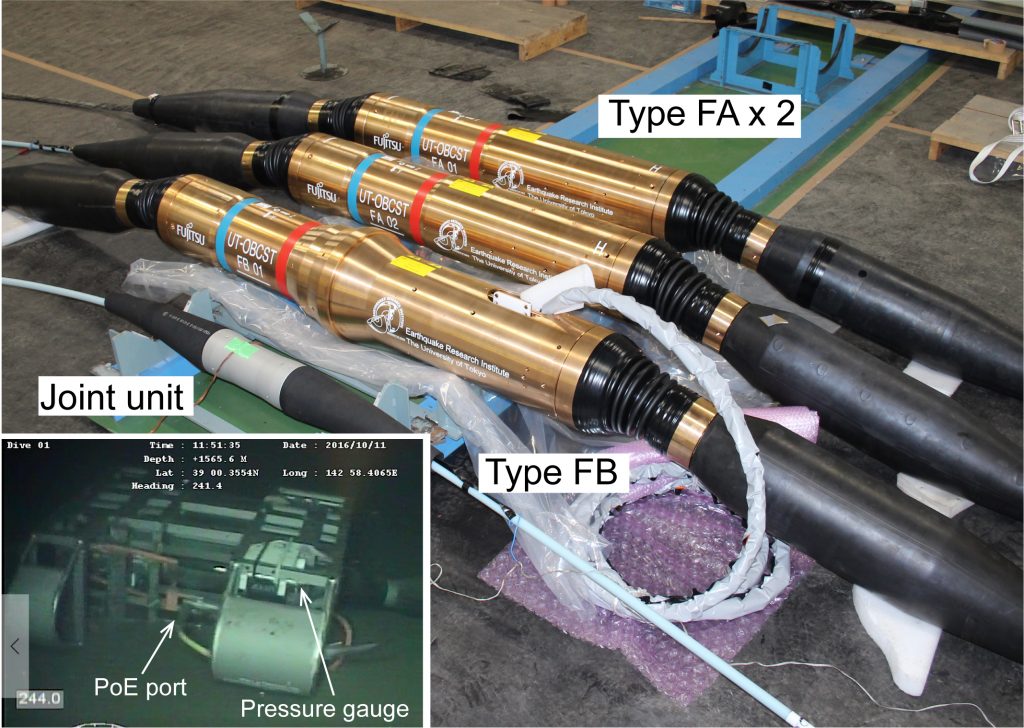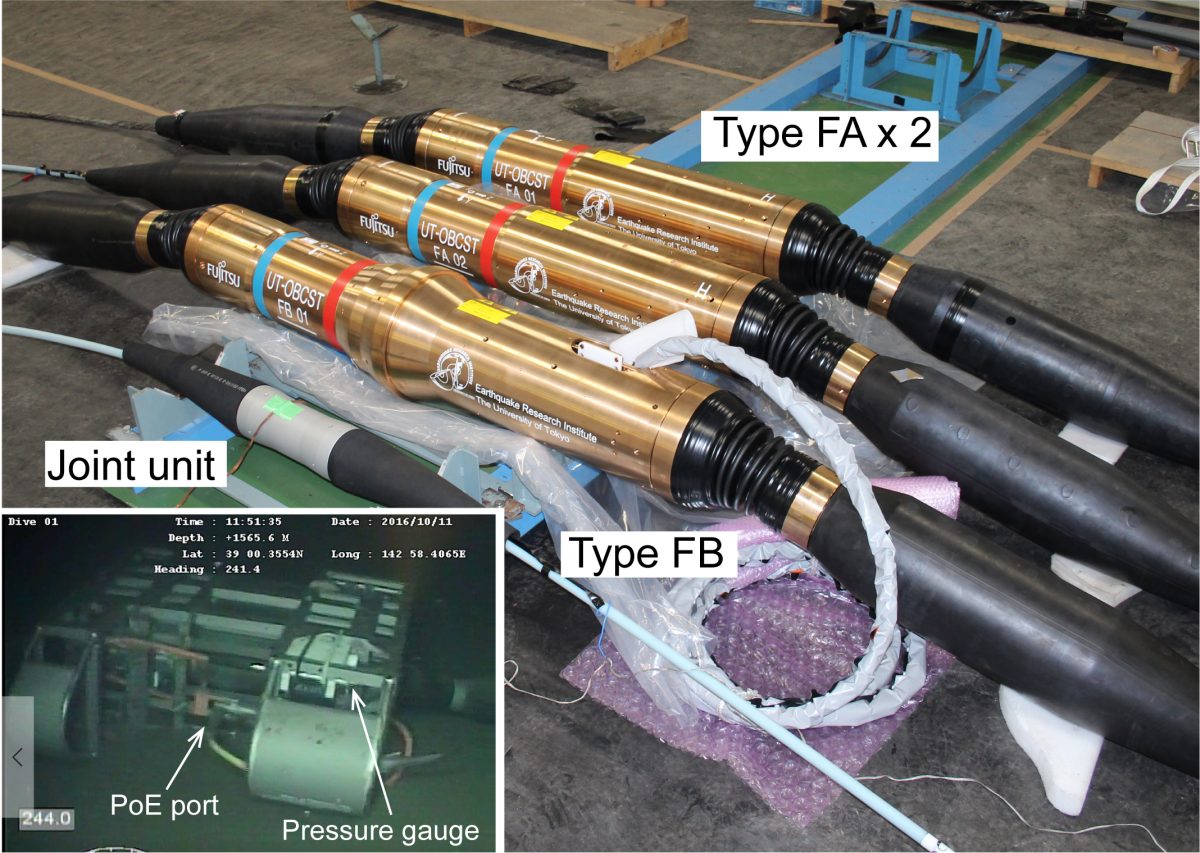Masanao Shinohara1 , Tomoaki Yamada1 , Kenji Uehira2 , Shinichi Sakai1,
Hajime Shiobara1 , and Toshihiko Kanazawa1,3
(1Earthquake Research Institute, The University of Tokyo,
2National Research Institute for Earth Science and Disaster Resilience, 3Association for the Development of Earthquake Prediction)
Earth and Space Science, 8, e2020EA001359.
https://agupubs.onlinelibrary.wiley.com/doi/full/10.1029/2020EA001359
Cabled seafloor seismic and tsunami observation systems are ideal for marine geophysical monitoring because the data can be obtained in real time. We have developed a new compact seafloor cable seismic and tsunami observation system using Information and Communication Technology (ICT). Our system achieves reliability through redundancy using ICT. A software-based system using up-to-date electronics technology contributes to cost reduction and production sustainability. The system named the Ocean Bottom Cable Seismic and Tsunami (OBCST) observation system was installed on the Pacific Ocean floor off Sanriku, northeast Japan, in September 2015, in the source area of the 2011 Tohoku-oki earthquake. The purpose of the installation is to monitor seismic activity better and to observe tsunami activity through spatially dense observation. The system has been continuously collecting the seismic and pressure data since the deployment. For the seismic data, ambient seismic noise is comparable to that from a previous cable observation system. One observation node is buried 1 m below the seafloor and has a lower noise level compared to nodes on the seafloor. Because the noise levels are stable, many local earthquakes and teleseismic events have been recorded by the system. The data obtained by high-precision pressure gauges have a resolution of <1 hPa which is limited to environmental noise. The effectiveness of the buried pressure gauge is demonstrated by a recording of a tsunami. The system also continuously monitors its operating environment. The operating temperature is reasonably low and stable, which is optimal for long-term operation.



